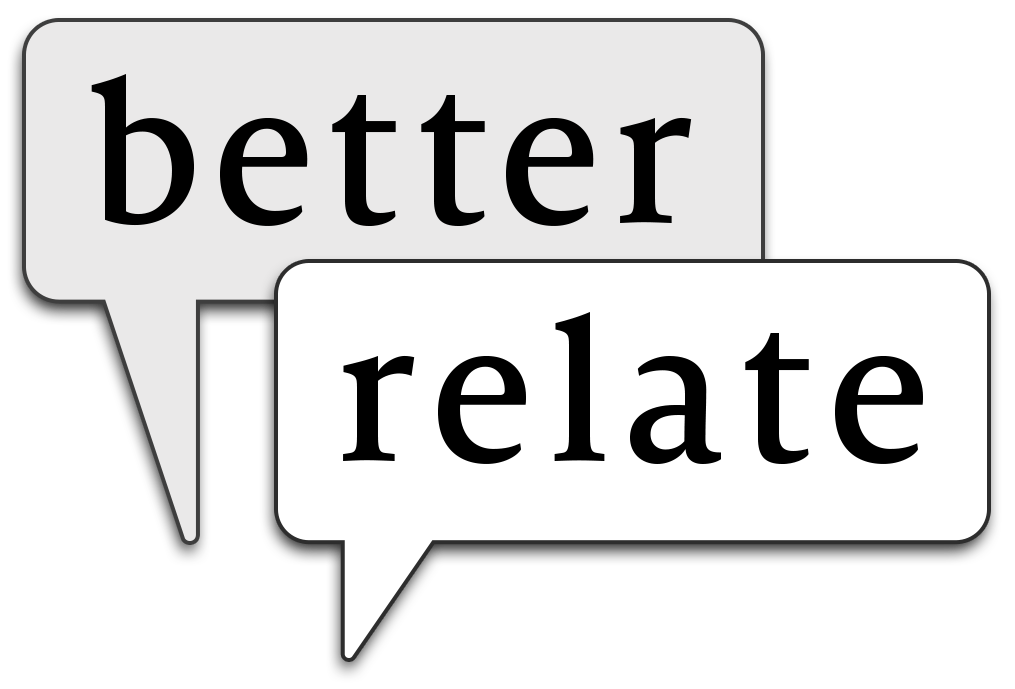Overcoming the #1 Communication Problem for Couples
During an argument, the biggest communication problem for couples is: everybody’s talking and nobody’s listening.
This is true even when couples take turn turns talking. Nobody’s really listening! They’re just waiting for their turn to start talking.
I call that kind of listening conversational listening. That kind of listening is just fine if you’re discussing the weather or local news.
Conversational listening is not appropriate when you’re talking about more serious topics, or worse, if the conversation becomes heated.
When the topic gets more serious or things heat up, you want to kick into the next phase of listening: horizontal listening. From a place of Calm Curiosity, you ask your partner questions about whatever it is they’re telling you. You don’t add anything new. You just extend their talking.
I’ve read that the most loving words a person can say to their partner is, “Tell me more.” That’s what horizontal listening is all about.
However…
During a fight, horizontal listening goes out the window: Emily and Sören
It’s really, really hard to listen horizontally during an argument with your partner.
- If your partner is venting their unhappiness at you, it doesn’t feel good to listen to it.
- As you listen to your partner complain about you, you may think of how your own needs aren’t being met and wondering when the last time was that they cared about that!
My clients Emily and Sören (not their real names) were a classic case of this.
Emily would get angry and explode and say all kinds of things that came to mind. After, she’d feel better and when I asked her she said she thought she did get what she wanted at least sometimes. That’s how Emily’s family operated when they were growing up.
So why were Emily and Sören in my office? Emily was frustrated because she still wasn’t getting what she wanted.
Where was Sören in all this? Was he the “winner” in this relationship, always getting his way?
No. If anything, Emily’s angry outbursts helped her feel better, but for Sören he’d just shut down.
He said he actually felt he had compromised in most areas to his bottom line and could not bend any further. He felt trapped by her anger. It was harder for him to feel warm and loving after these explosions.
He wasn’t enjoying their relationship much more since he spent most of his time walking on eggshells to prevent another angry outburst.
Emily felt better and liked that Sören had compromised. But Sören was miserable. They were suffering from the #1 communication problem for couples.
Remember: even Achilles was only as strong as his heel
Likewise, a relationship is only as healthy as its unhappiest member. I don’t like that statement because it’s phrased in such a way that unhappiness seems inevitable in a relationship. But if we’re honest with ourselves we know every relationship has turbulence.
Fights bring out our emotions and when we let them speak for us, watch out! The truth is: you will never get what you want when you’re speaking or acting from anger.
In fact, you’ll usually get the opposite. Kind of like Emily and Sören.
Stop arguing! 6 steps to solve this classic communication problem for couples
Remember how I said during fights, the last thing you feel like doing is really hearing your partner?
We can get back into that mindspace by taking a few deep breaths and following these 6 steps. You can do them with your partner or by yourself.
You don’t have to wait for your partner to be ready to hit the “do over” button. It would be nice if your partner was ready at the same time as you but it’s not necessary. Yes, you can work on the #1 communication problem for couples all by yourself.
Instead, think about conflict as a circle not a line. Like I wrote about in my blog post “How Do You Get Your Partner to Change?”
If you change one thing in the circle, you change the whole circle…If you want your partner to change, change yourself. Then you will begin to change together without forcing someone else into change.
Here’s how to get started.
- Notice you or your partner has been hijacked by anger or other negative feeling: voice, emotion, behavior.
- Push the Pause button. That means you must take a time out from all action.
- Sit quietly alone and reflect. Ask yourself, “What is the strongest emotion in me right now?”
- Ask yourself, “If this strong emotion could have what it wanted right now, what would that be?”
- Can you find the need behind this extreme behavior?
- Write this down and share it with your partner in an email. See the formula below.
The format would look like this:
I feel (a named feeling like irritated or sad) when you do (an observable behavior) I need (a clear action). Could you do that? What could you do?
If your partner is joining you, do this next part together too
After you have read each other’s emails, think about how your partner feels. Have you ever felt this way yourself?
You hit the compassion bullseye when you set aside wanting to understand why your partner feels (a certain way) and start understanding how your partner feels.
Pausing and reflecting during this time out helps you get how they feel and how bad it must feel for them.
That is the compassion bullseye. You are now feeling compassion for how hard it is for them to feel that way although you may not agree with the reason.
After connecting with Compassion, it’s time for horizontal listening
This is a beginning to relate and communicate as you look at how to solve the difference you are in together.
Don’t stop there. Keep going. Get back together and for 20 minutes and do some horizontal listening. Read the principles of it here and come back.
To start the talk state what you learned in their email.
- Here’s what I understood about you can you tell me more?
- What does it feel like to you to feel worried?
Then let them talk and while you make discoveries for those 10 minutes.
Stop here and change roles.
The other partner gets curious for 10 minutes. Wondering and not having the answers. Even feeling how hard it is for their partner when they are experiencing something this way.
Know that there doesn’t have to be an agreement or a truth. This is a conversation to learn about each other differently.
If you can learn this skill, you’ll have solved the #1 communication problem for couples and learned how to stay close to your partner even when you’re arguing.
Image credit: Conversation by Flickr user Harold Navarro is licensed under CC-BY-ND 2.0.



